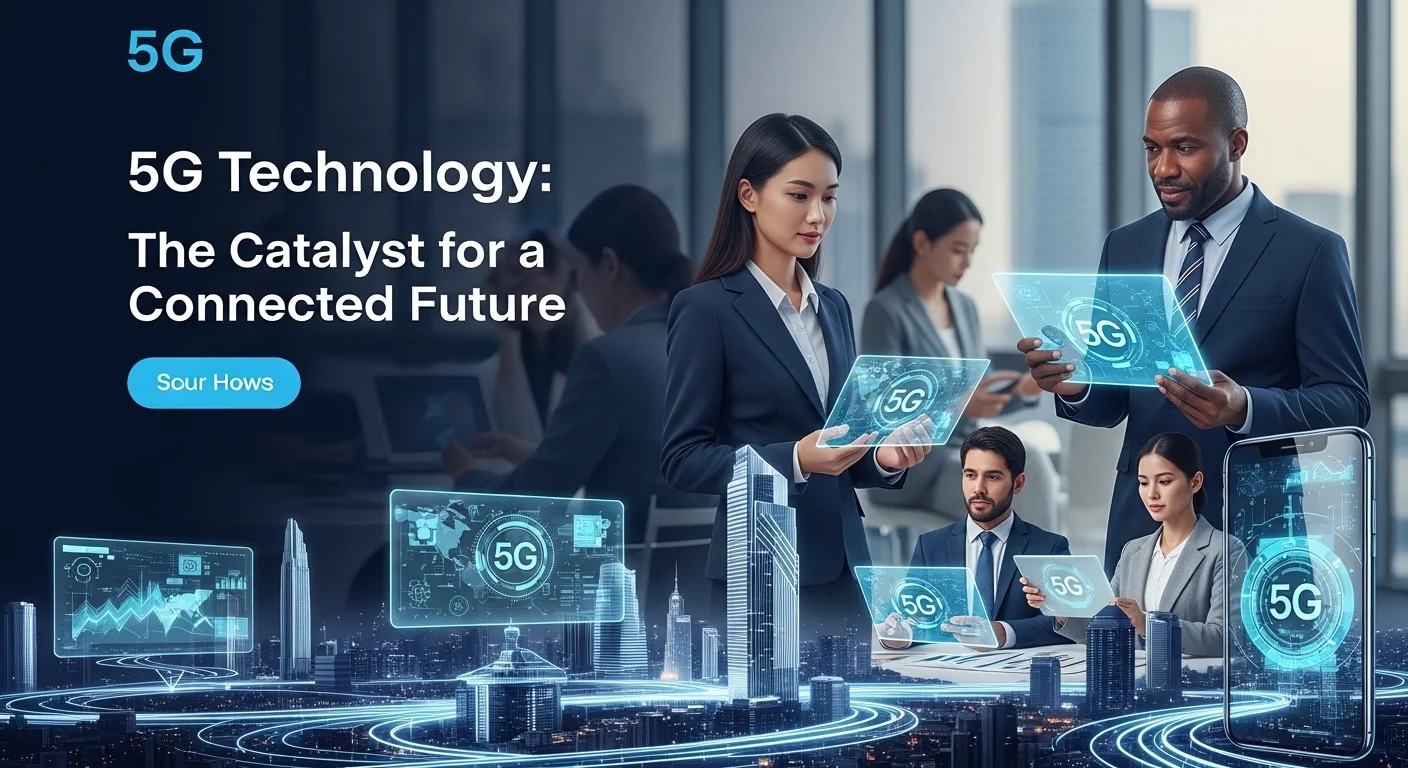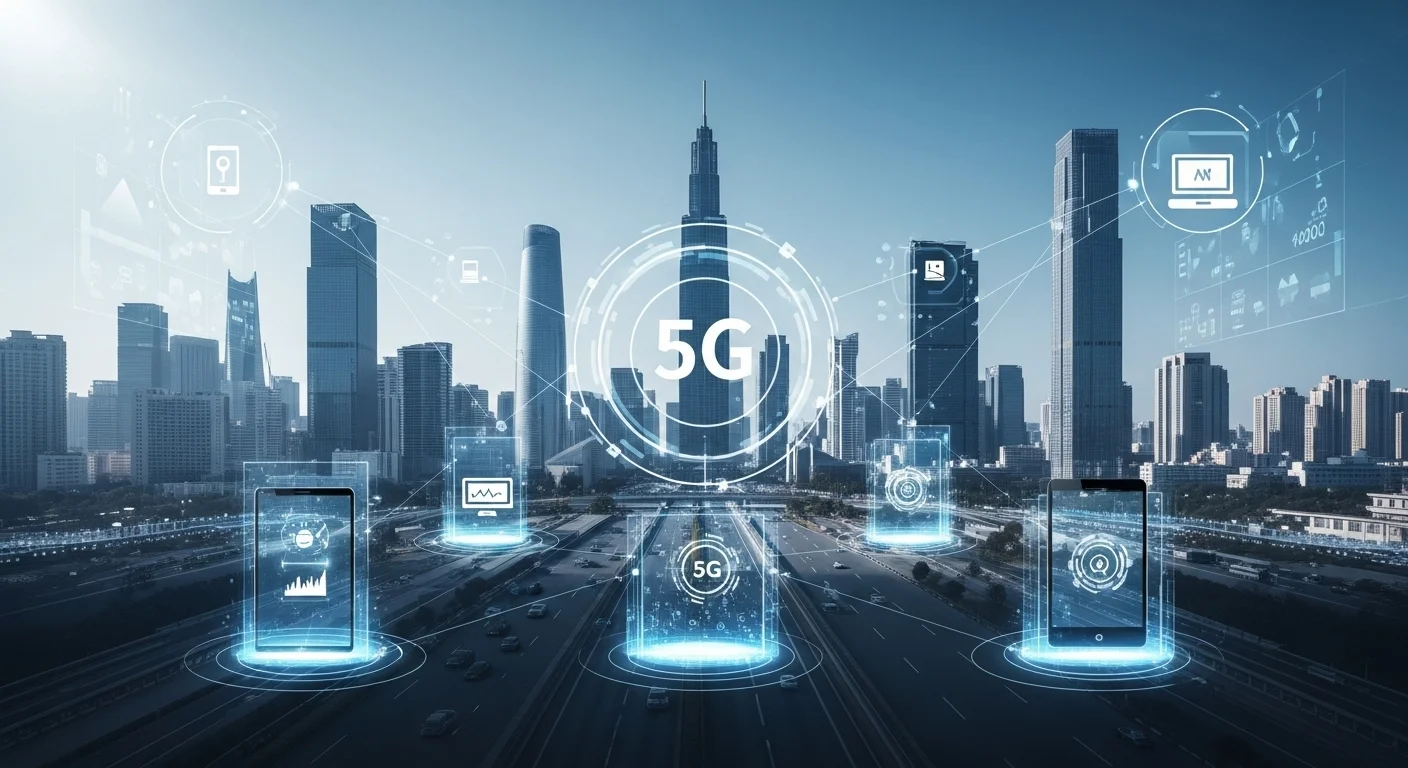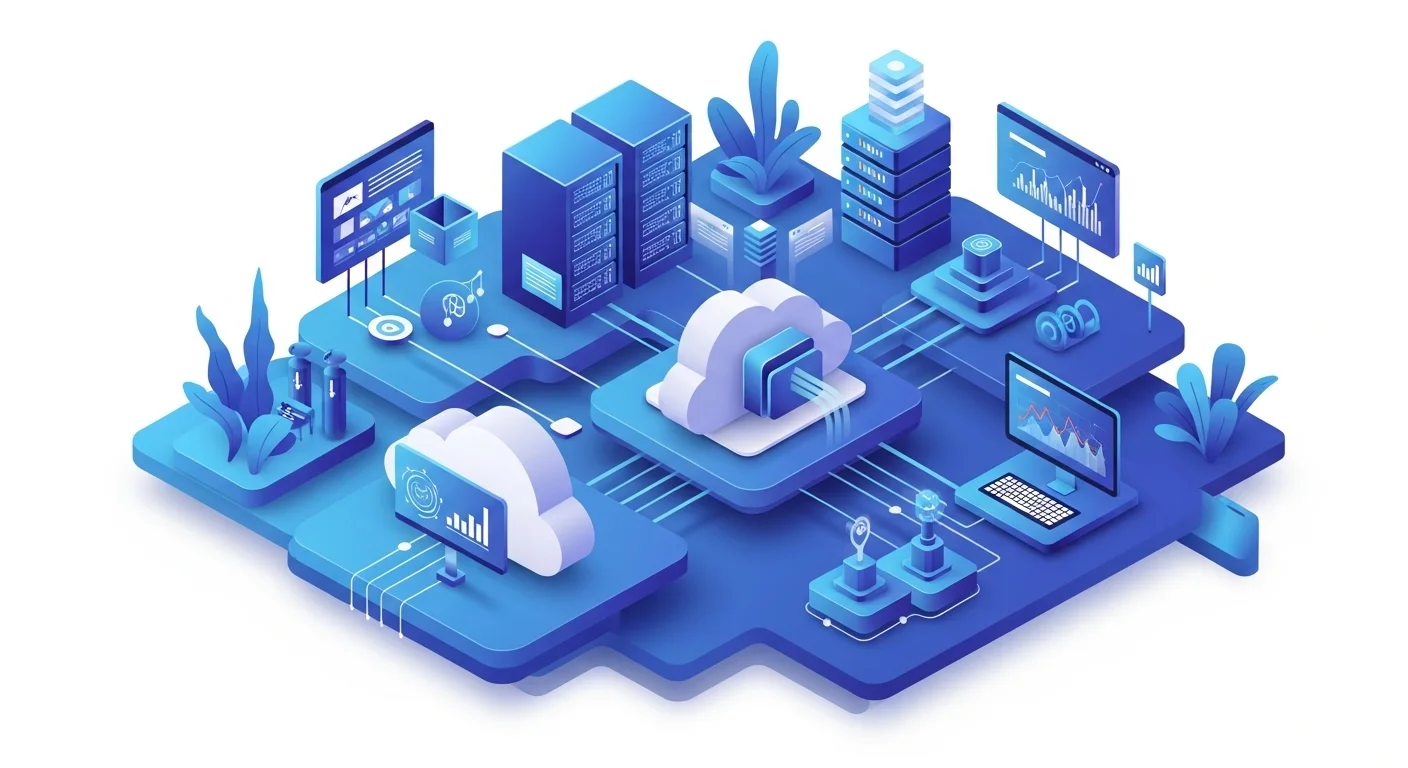5G Isn't Just Faster—It's a Revolution. Here's How It Affects You.

Executive Summary
I remember when we switched from 3G to 4G. Suddenly, we had apps, video streaming on the go—it changed our world. Now, we're at another turning point with 5G, and trust me, the leap is even bigger. It’s not just about speed; it's about connecting everything, from smart factories to your own home, with almost zero delay. In this article, I'll break down what 5G really means, cutting through the hype. We'll explore how it’s shaking up business, why it’s a game-changer for cloud computing and AI, and what you need to know about keeping this new connected world secure. Think of this as your personal guide to understanding the next digital revolution.
Table of Contents
What's Inside This Guide
What is 5G, Really? (And Why It's More Than Just Speed)
The arrival of 5G, the fifth generation of wireless tech, is so much more than a simple upgrade. I’ve been in this industry long enough to see these shifts happen, and this one is a fundamental change in how we connect to the world. It’s not just about your phone loading websites faster; it's about building a network smart enough and fast enough to connect everything around us. While 4G brought us the app store and streaming video in our pocket, 5G is the foundation for things we used to only see in sci-fi movies: truly smart cities, the Internet of Things (IoT) finally realized, and immersive virtual reality experiences that don't make you nauseous. Its real importance is as a catalyst for a new wave of innovation that was simply impossible on older networks.
The Real Difference: From 4G to 5G
So what makes 5G so different? It boils down to three key things: speed, latency, and capacity. For speed, we're talking about a jump from a fast car to a rocket ship, with potential speeds that make downloading a full-length movie take just a few seconds. This is possible because 5G uses a broader range of radio frequencies, including high-frequency 'millimeter waves' that carry massive amounts of data. Then there's latency—that’s the technical term for lag. With 5G, latency drops to almost zero, as low as one millisecond. Imagine clicking a link and the page loading before you even lift your finger. That near-instant response is what makes things like self-driving cars and remote surgery possible. Finally, capacity. 5G is built to handle a staggering number of connections at once—up to a million devices in a single square kilometer. That’s the key to unlocking the true potential of the IoT, where our cities and homes will have billions of sensors all talking to each other seamlessly.
The Three Pillars of 5G Power
To make sense of it all, I like to think of 5G's capabilities as three distinct pillars, each serving a different purpose:
- Enhanced Mobile Broadband (eMBB): This is the 5G you'll feel first. It means much higher bandwidth for everyone. Think flawless 4K video streaming on the bus, cloud gaming that feels as responsive as a console, and AR/VR apps that actually work. For anyone with the latest 5g mobile device, this translates to a richer, faster mobile experience.
- Ultra-Reliable Low-Latency Communication (URLLC): This is for the mission-critical stuff where failure is not an option. It's the pillar that will allow a surgeon to control a robotic arm from another city or a factory to coordinate its automated machinery with perfect precision. This is where the quality of the internal 5g modem becomes absolutely vital.
- Massive Machine-Type Communications (mMTC): This is the engine for the IoT. mMTC is designed to connect a huge number of low-power devices that only need to send small bits of data. It's perfect for things like agricultural sensors reporting soil moisture, smart city grids managing power, or a logistics company tracking thousands of packages in real time.
The Perfect Partnership: 5G, Cloud, and AI
5G doesn't exist in a vacuum; its true power is unleashed when paired with cloud computing 5g strategies and Artificial Intelligence. Think of it this way: the cloud is the giant, powerful brain, and 5G is the lightning-fast nervous system that connects it to everything. This means a new mobile 5g phone doesn't need to be a supercomputer; it can offload heavy processing tasks to the cloud and get the results instantly. This synergy also powers 'edge computing,' where small cloud servers are placed closer to you, reducing lag even further for things like real-time data analysis. AI models need tons of data to learn and operate, and 5G provides the massive data pipeline to feed them in real time. For example, a smart factory can use 5G sensors to stream data to an AI that predicts when a machine will break down, long before it happens. This trio—5G, Cloud, and AI—is what will drive truly intelligent and autonomous systems in the coming years.
Why 5G Security is Non-Negotiable
Connecting everything sounds great, but it also opens up a whole new world of security challenges. With billions of new devices online, the number of potential targets for cyberattacks explodes. Because of this, robust 5g network security isn't just a feature; it's a fundamental requirement. We have to build security in from the ground up, based on a 'Zero Trust' model—basically, trust no one and verify everything. Advanced encryption and AI-driven systems that can spot threats in real time are no longer optional. As our core infrastructure becomes more dependent on 5G, protecting the network is a matter of economic and even national security. Every part of the system, right down to the 5g modem in each device, has to work together to create a network we can trust.

A Practical Guide to 5G for Business
Alright, so you understand the 'what.' Now for the 'how.' I've worked with many businesses navigating this shift, and the ones who succeed are the ones who move beyond the hype and focus on real-world value. This is about taking the incredible potential of 5G and applying it strategically to your operations. It starts with understanding the building blocks, from the 5g modem that acts as the gateway to the network strategies that protect your data.
The Tech Explained: Spectrum, Small Cells, and Slicing
The technical side can seem intimidating, but it's simpler than you think. 5G's magic comes from how it uses radio frequencies and a smarter network design. Here’s my simple breakdown:
- Sub-6 GHz: Think of this as the wide, steady river of 5G. It covers vast areas, much like 4G, providing a solid baseline of connectivity. It's the workhorse of 5G, delivering a noticeable speed boost and reliability across cities and towns.
- Millimeter Wave (mmWave): This is the firehose of 5G. These high frequencies deliver mind-blowing speed and capacity, but they don't travel far and can be blocked by things like walls or even trees. To make it work, networks use a lot of 'small cells'—think of them as mini cell towers—placed on things like light poles and buildings in dense urban areas or stadiums.
The real architectural game-changer is network slicing. In my opinion, this is one of the most powerful features of 5G for businesses. It allows operators to divide the physical network into multiple virtual networks. Imagine having your own private, dedicated lane on the internet highway just for your most critical tasks. A hospital could have one 'slice' for transferring huge MRI files (high bandwidth), and a separate, ultra-secure slice for remote patient monitoring (ultra-reliable). This offers amazing flexibility, but it also means that your 5g network security strategy has to be smart enough to protect each slice individually.
What Smart Companies are Doing with 5G
The theory is great, but the real excitement is seeing how industries are putting 5G to work. Here’s what I'm seeing on the ground:
- Manufacturing (Industry 4.0): Smart factories are becoming a reality. 5G allows for predictive maintenance, where sensors on machines tell you they need a repair before they break. It enables wireless control of robots and provides augmented reality overlays for workers doing complex assembly tasks.
- Healthcare: The impact here is profound. 5G enables crystal-clear telemedicine calls, continuous remote monitoring of patients at home, and near-instant transfer of huge medical scans. It’s laying the groundwork for future applications like remote robotic surgery.
- Retail: 5G is enhancing the shopping experience. AR apps powered by 5G let you see how a new sofa would look in your living room. In stores, it supports cashier-less checkout and can send personalized offers to a customer's new mobile 5g device as they walk the aisles.
- Transportation and Logistics: 5G is the nervous system for autonomous vehicles, allowing them to talk to each other and to smart traffic lights to prevent accidents. For logistics companies, it means tracking every single package in real time, completely optimizing the supply chain.
- Cloud and IT: For many businesses, a 5G connection is now a viable alternative to wired internet, offering fiber-like speeds with more flexibility. This is a massive boost for cloud computing 5g strategies, ensuring every employee has fast, reliable access to cloud apps from anywhere.
Choosing the Right Gear: Modems and Mobile Devices
To tap into this power, you need the right hardware. For most users, that means the latest 5g mobile phone or tablet. When choosing devices for your team, check which 5G bands they support (Sub-6, mmWave, or both) to match the coverage in your area. For connecting an office, a fleet of vehicles, or an IoT project, you'll need a dedicated 5G router or gateway. These are rugged, enterprise-grade devices. From my experience, skimping on the quality of your 5g modem or router is a mistake; it's the heart of your connection, so invest in one that's reliable and secure.
The 5G vs. Wi-Fi 6 Showdown: It's Not a Fight
People often ask me, 'Should I use 5G or Wi-Fi 6?' The answer is almost always 'both.' They're designed for different jobs. Wi-Fi 6 is perfect for high-speed wireless *inside* your office, warehouse, or home. It's a Local Area Network (LAN). 5G is for connecting you to the *outside world* over a huge area. It's a Wide Area Network (WAN). They're teammates, not competitors. You’ll use Wi-Fi 6 to connect devices inside your building, and a 5G router to connect that entire building to the internet.

My Pro Tips for Mastering Your 5G Experience
Getting on board with 5G isn't just a hardware upgrade; it's a strategic shift. Over the years, I've seen clients succeed by being proactive, focusing on security from day one, and truly understanding how to get the most out of their new capabilities. Here are some of my go-to tips and strategies to help you get it right, whether you're running a business or just want the best experience on your new phone.
My Security Checklist for a 5G World
As networks get more powerful, so do the threats. If you take away only one thing from this article, let it be this: your approach to 5g network security must be robust and multi-layered. Here are my non-negotiables:
- Embrace a Zero Trust Architecture: This is my golden rule. The old model of trusting everything 'inside' the network is dead. Zero Trust means you 'never trust, always verify.' Every single user and device must prove who they are to get access to anything. This is the single most effective way to limit damage if a breach occurs.
- Encrypt Everything: This is basic security hygiene. All your data, whether it's flying across the network or sitting on a server, must be protected by strong, modern encryption. It's like putting your data in a digital safe.
- Segment and Slice Your Network: Don't let all your data swim in the same pool. Use network segmentation to create separate zones for different types of traffic. Isolate your guest Wi-Fi from your critical business systems. 5G network slicing takes this to the next level, creating completely isolated virtual networks for specific apps, ensuring a problem in one slice can't infect another.
- Patch and Update Religiously: I can't stress this enough. Cybercriminals prey on outdated systems. Make sure all your network gear, from routers down to the 5g modem in every device, and every new mobile 5g phone, is always running the latest software and security patches.
- Use AI as Your Watchdog: The sheer volume of data on a 5G network is too much for humans to monitor alone. Modern, AI-powered security tools can analyze traffic in real time, spotting suspicious patterns and potential threats that would otherwise fly under the radar.
How to Tune Your Business for 5G
To really win with 5G, you need to think differently about your processes. This is especially true when it comes to your cloud computing 5g strategy.
- Start with an Assessment: Before you spend a dime, figure out where 5G can make the biggest impact. Do you have remote teams that need better video conferencing? Or a factory floor that could benefit from automation? A clear goal will guide your entire strategy.
- Train Your People: New tech is useless if your team doesn't know how to use it. Invest in training for your IT staff on managing 5G networks and for all employees on using new 5G-powered tools securely and efficiently.
- Pilot First, Then Scale: Don't try to change everything overnight. I always advise clients to start with a small pilot project. Test 5G on one specific process, learn from it, and build a solid case for a larger rollout.
- Get to the Edge: For anything that needs an instant response, pair your 5G with an edge computing strategy. Processing data locally at the 'edge' of the network minimizes lag and delivers faster insights, which is a game-changer for manufacturing and retail analytics.
- Choose Your Partners Wisely: You don't have to do this alone. Work with technology partners and service providers who have real, proven experience with 5G deployments. Their expertise can save you a lot of headaches.
Getting the Most from Your New 5G Phone
For the rest of us, the latest 5g mobile device is our personal gateway to this new world. Here's how to maximize it:
- Check Your Coverage: 5G is still expanding. Before you get frustrated with speeds, check your carrier's map. Knowing whether you're in a high-speed mmWave zone or a broader Sub-6 area helps set the right expectations.
- Try the New Toys: 5G's speed and low lag are built for cool experiences. Give cloud gaming a shot—you can stream top-tier games right to your phone. Explore some of the new AR apps that let you visualize products or play games in your own room.
- Lock It Down: Your phone is your life. Use a strong password or biometrics, be very skeptical of apps you've never heard of, and only download from official app stores. Good security habits are more important than ever.
- Want to Dive Deeper?: For those who love the technical details, the team at Qualcomm, who designs much of the foundational tech inside these devices, offers an excellent guide. You can check out their What is 5G? page for a more in-depth look at how it all works.
Expert Reviews & Testimonials
Sarah Johnson, Business Owner ⭐⭐⭐
This was a solid overview of 5G. As a business owner, I would have loved even more real-world case studies, but it's a great starting point.
Mike Chen, IT Consultant ⭐⭐⭐⭐
A very helpful article on 5G. It cleared up a lot for me, though a few of the more technical concepts could be broken down a bit more.
Emma Davis, Tech Expert ⭐⭐⭐⭐⭐
Fantastic article! Genuinely comprehensive and clear. As a tech specialist, this helped fill in some gaps for me. I understood every part perfectly.



